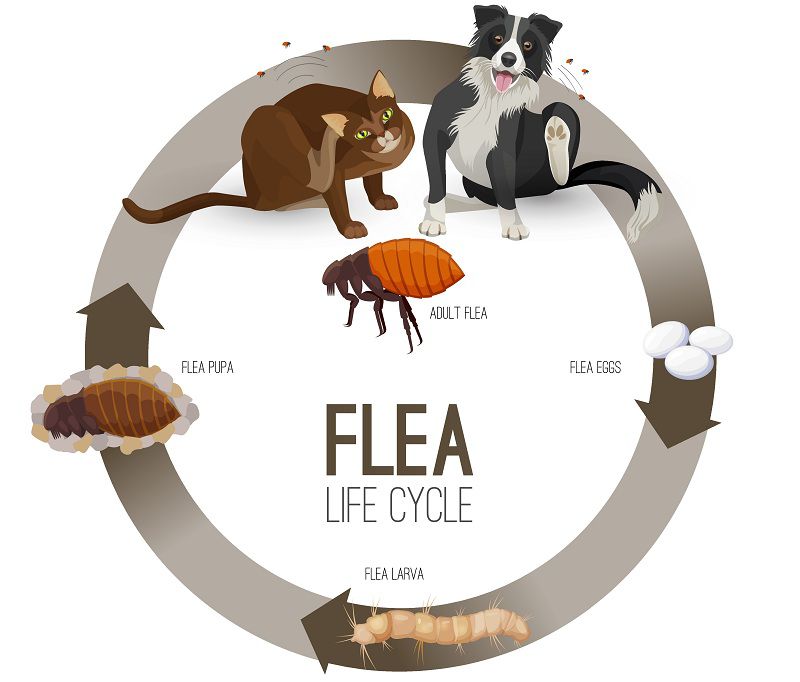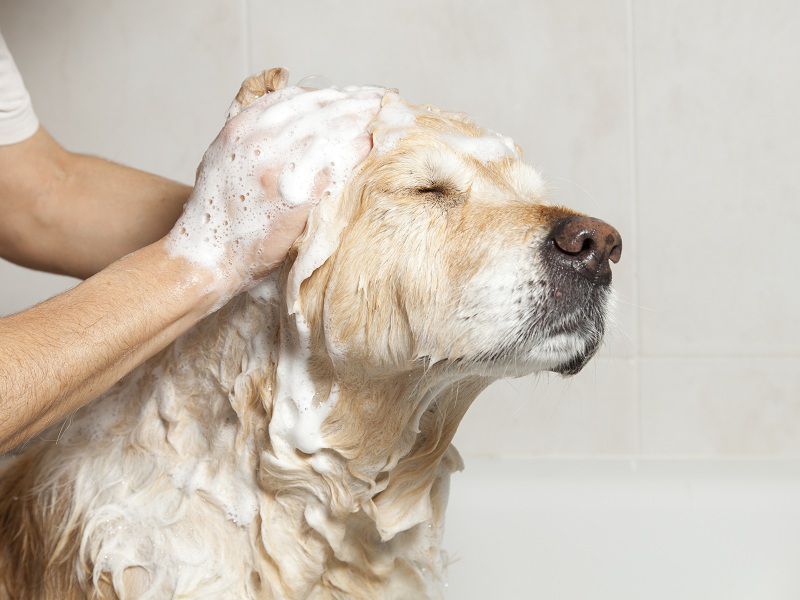As a pet owner, you want to provide the best life for your animal companion as they spend it with you, whether that’s through the food you feed them, the walks you take them on, or the expensive vet visits you pay for. While these are all key factors in ensuring the wellbeing and happiness of your pet, another important factor of taking care of your dog is keeping fleas far away from them.
How can you prevent fleas on your dog? Read on!

I. Flea Prevention Options
The best way to protect dogs from fleas is not to treat them after they appear, but, instead, to prevent them from appearing in the first place. Not only is flea prevention easier than treatment, but it can be less expensive as well. Not to mention the fact that it keeps dogs from having to deal with fleas for any period of time.
The best tip for preventing fleas on dogs is to invest in flea prevention medication, which can be purchased in many different forms, such as the following:
1. Collars
Flea collars contain a concentration of chemicals that repel both fleas and ticks from dogs. The chemical is dispersed over the dog’s body and lasts several months. Some collars can irritate the dog’s neck or have a strong smell, but there are many different collars on the market to choose from; one may work for some dogs better than it does for others.
2. Topical Medications
Topical flea prevention medications are applied to the dog’s skin at certain ‘hot spots.’ Hot spots are areas that fleas tend to be found most, including between shoulder blades or around the neck. A positive to using topical medications is they’re deposited into the sweat glands and, then, released over several weeks. This means dogs who love to swim or need a bath can do so without washing away the medication.
3. Oral Medications
Many of the oral medications that are offered also kill ticks, and can possibly prevent heartworm disease or other internal parasites. Oral medication can be given easily within food or treats, but these can sometimes cause side effects, including vomiting, diarrhea, or different skin reactions.
4. Shampoos
Flea shampoos are used to wash away both adult fleas and their eggs. That being said, flea shampoos don’t usually entirely rid dogs of fleas nor keep them from returning. If choosing to use flea shampoo, however, be sure to let it stay in contact with the skin for 10 to 15 minutes before rinsing.
5. Sprays And Powders
Different flea sprays can last up to several months if the dog stays dry. The application of these sprays is simple; just make sure to avoid the dog’s eyes and mouth. Similarly, powders are sprinkled over the entire body, also avoiding contact with the eyes and mouth, and, then, are rubbed into the skin and between toes.
Powders have potential side effects as well, including vomiting, drooling, shaking, diarrhea, and loss of appetite.
6. Dips
Flea dips are concentrated liquids diluted with water, which can be applied to the dog either with a sponge or by pouring it over the body. The dip must be left alone to air dry. Dips shouldn’t be used on young, nursing, or pregnant animals.

II. Spotting Fleas
Before deciding if flea treatment is necessary, it’s important to first determine whether or not your dog has fleas. These tips explain how to do that:
- Observe if the dog is scratching or biting their fur. Not only do flea bites hurt initially, but after these critters bite, they give off a substance that causes itching in most dogs.
- Look for fleas in the dog’s fur. While small fleas may be hard to identify, adult fleas are about an eighth of an inch long, and can be seen if you look closely enough.
- Look for ‘flea dirt’, which looks like pepper and can be seen not only on dogs, but also on bedding, the carpet, or furniture. This “flea dirt” is dried blood that can be either red, black, or brown.
III. Treating Existing Fleas
While prevention is always the best option, there are times when prevention precautions can fail. If this is ever the case, here are a few tips to remedy that situation:
1. Bathe Your Dog
A flea bath can be as simple as using warm water and a mild soap. However, specific flea shampoos can be used if they’ve been okayed by a veterinarian. However, practice caution when using a flea shampoo as it can irritate any open wounds or ‘raw spots’ a dog has from biting at fleas.
2. Comb Your Dog
Use a fine-tooth flea comb for this step. Flea combs are made to catch fleas while still passing through the fur. They also help to remove ‘flea dirt’, which will continue to irritate your dog if not removed. Fleas feed especially near the neck and tail, so be sure to pay close attention to these two spots when combing your dog.
3. Kill The Fleas
In order to kill any fleas that can be seen, don’t bother trying to kill them with your hands. Instead, look for fleas on the flea comb while going through your dog’s fur, and when you find one, dunk the comb in hot, soapy water in order to successfully kill it.
4. Regular Checks
Even if a dog has never had fleas or you think you’ve already killed them all, it’s important to check your pet’s fur with a flea comb once a week.
5. Let Your Dog Self-Groom
Dogs who have fleas will likely groom themselves more often than usual in order to try and get rid of them by themselves. It’s okay to let them do this, however, keep an eye on them because if they’re causing hair loss or inflamed or bloody skin, you’ll want to prevent that from continuing and treat as necessary.
IV. Remove Fleas From Household
After ridding your dog of their fleas, you must ensure your house is free of fleas as well. There are flea bombs available that contain chemicals and can be released in your home (when no one is there). However, you can also get rid of them simply by vacuuming the home regularly and sprinkling baking soda on carpets or furniture where fleas may be tougher to eradicate.
It’s also recommended to wash all bedding, both your pets and your own, in hot, soapy water.
Conclusion
There are many steps to flea prevention, as well as ridding pets and the home of fleas. However, if you take all the precautions to prevent the existence of fleas, there’s less of a chance you’ll need to utilize the steps to rid your dog and home of these itchy critters.
